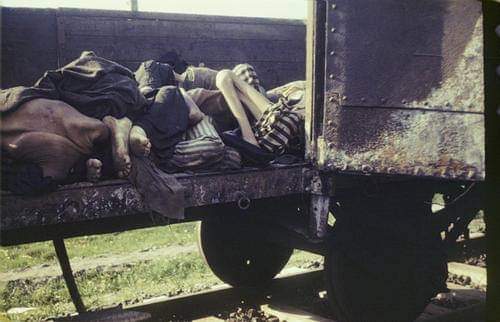
Today marks the 71st anniversary of The Liberation of Dachau.
Oklahoma has strong ties to that day through the incredible efforts of the 45th Infantry Division.
The 45th Infantry Division was formed in 1923 from elements of the National Guards of four states; Oklahoma, Colorado, Arizona and New Mexico. Following its activation for World War II the division reverted back to National Guard status, and the 45th Infantry Division became an all-Oklahoma organization. Weekly evening drill periods were again held in armories statewide, and Fort Sill was the site of many of their annual summer encampment. In 1950 the Thunderbirds were again called to active duty and were one of only two National Guard Divisions to see combat in the Korean War.
Today, about 2 miles from the Oklahoma Department of Agriculture, Food and Forestry, is the 45th Infantry Division Museum, 2145 NE 36 St. in Oklahoma City.
A room of this museum is devoted to sharing the story of the Liberation of Dachau.
Konzentrationslager Dachau was the first concentration camp established by the Nazi party in 1933 as a re-education center. At first, Dachau held only 4,800 prisoners, but by the end of the war the camp at Dachau and all of its satellite camps throughout southern Germany held approximately 67,000 prisoners. Of those prisoners, 21,000 were Jewish. Over the years, more than 188,000 prisoners stayed at Dachau. Between 1940 and 1945, at least 28,000 of those prisoners died of disease, starvation, or execution. There are no accurate records for those who died between 1933 and 1939, so the total number of those who died at Dachau is unknown to this day.
On April 29, 1945, as the spearhead of the 7th Army advance in their Corps area, the 157th Infantry Regiment’s “I”, “L”, “M” and weapons Companies lead the attack toward Munich. Shortly after crossing the Line of Departure LTC Felix Sparks was ordered to divert and eliminate a German military facility in their right flank. This facility turned out to be KZ Dachau located 10 miles northwest of Munich. While other units in the Allied forces had found other, smaller camps, the men of the 45th had only heard rumors about what they might find there. Most of the soldiers thought they were just like POW camps they had liberated before. None were unprepared for what they found within Dachau’s walls.
While most of the 45th controlled the area around the camp and the town of Dachau west of the camp, I Company and elements of M Company of the 157th Regiment moved to secure the camp. After a sharp fire fight with the remaining SS Camp guards, the 45th men took over the camp and were horrified, and sickened, by what they found. All of the living prisoners were starving, and many were sick with or dying of typhus. Thousands of prisoners were dead, hundreds were found in boxcars where they died while being transferred from the East. Countless bodies were stacked in rooms inside the crematorium and piled like garbage on the grounds around it. Journalists traveling with the 45th took photos or shot film of everything they saw, under orders from General Eisenhower, Supreme Allied Commander:
“The same day I saw my first horror camp. It was near the town of Gotha [in Germany]. I have never been able to describe my emotional reactions when I first came face to face with indisputable evidence of Nazi brutality and ruthless disregard of every shred of decency. Up to that time I had known about it only generally or through secondary sources. I am certain however, that I have never at any time experienced an equal sense of shock.
“I visited every nook and cranny of the camp because I felt it my duty to be in a position from then on to testify at first hand about these things in case there ever grew up at home the belief or assumption that “the stories of Nazi brutality were just propaganda”. Some members of the visiting party were unable to go through with the ordeal. I not only did so but as soon as I returned to Patton’s headquarters that evening I sent communications to both Washington and London, urging the two governments to send instantly to Germany a random group of newspaper editors and representative groups from the national legislatures. I felt that the evidence should be immediately placed before the American and the British publics in a fashion that would leave no room for cynical doubt.”
The 45th held the camp as it was so that doctors could treat the prisoners. 7th Army also left the camp as it was while seeing to the humanitarian needs of the victims, so investigators could document the atrocities for the war crimes trials that took place in Nuremburg after the war.
The 45th Still had the mission of securing Munich, so the 157th continued its combat mission as soon as it could be relived.
You can visit the 45th Infantry division Museum from 9 a.m. to 4:15 p.m. Tuesday through Friday, 10 a.m. to 4:15 p.m. on Saturdays and 1 p.m. to 4:15 p.m. on Sundays. Admission is free, though donations are welcomed at the door.
Article from the web site of the Oklahoma Department of Agriculture Food and Forestry.
Source: the 45th Infantry Division Museum, and the Oklahoma Historical Society.










Leave a Reply